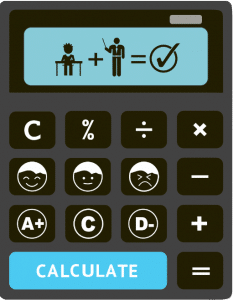Overview
Now that you know what discrete random variables are, let’s turn our focus on an exciting concept from your year 11 HSC Advanced Maths curriculum – the mean or expected value.
Learning Outcomes
After reading this post, you will be
- Able to understand how to calculate the mean of a discrete random variable
- Understand the true meaning of mean or the expected value of a discrete random variable
Let’s understand the concept
Consider this example:
Your friend offers you to play a game with him. He hands you two unbiased coins with equal chances of showing heads and tails. He asks you to toss both coins simultaneously. The deal is this: if both coins show heads, your friend pays you $4; if only one of them shows a head, you pay your friend $1; if neither of them shows a head, you pay your friend $3. The big question: do you want to play? Put differently, do you think you can gain from this deal?
The answer to the question above is determined by the mean or the expected value of the random variable, as we will soon see. If the expected value is positive, you stand a good chance to gain from this deal. On the other hand, if the expected value is negative, you will likely lose money in this deal. A zero value indicates the odds are balanced (you should be neutral).
Calculation
The expected value of a random variable is calculated by adding the products of each value with its probability.
Consider the example above. We define a discrete random variable X as the dollar amount you will be paid. X can be -1 (one head, and negative because you would be paying), -3 (no head) or +4 (both heads, positive because you would be earning).
The table below shows the probability distribution of X, and the product of each of its values and their corresponding probabilities.
| X | -3 | -1 | +4 |
|---|---|---|---|
| P(X) | 1/4 | 1/2 | 1/4 |
| X.P(X) | -3/4 | -1/2 | +1 |
Expected value (\(\mu \)) = \(\sum x_{i}\cdot P(x_{i})=-\frac{3}{4}-\frac{1}{2}+1=-\frac{1}{4}\)
So, you’d expect to lose ¼ of a dollar in this deal. But how is that even possible? According to the deal, you either gain $4 or lose $3 or $1, right? Under no circumstance are you expected to lose a fractional amount of a dollar! What’s going on, then?
The idea is this: if you play the game only once, you can’t lose ¼ of a dollar. Agreed. But imagine sitting all day long and playing this game with your friend. You play 100 times, 500 times, or maybe 2,000 times. Then, at the end of the day, you are expected to lose $0.25. The more the number of times you play, the closer the actual amount gets to the calculated amount. Hence the name, expected value. Does that make sense?
By the way, if you need assistance preparing for your Year 11 HSC Advanced Maths exam, don’t hesitate to contact us!
Here’s another example:
Your school runs a lottery each day in a given month. They sell 500 tickets to the students – one ticket to each student, which costs $5. The first prize is a gift voucher of $300, the second prize is worth $250, and the third prize will fetch $200. There is no other prize. You are free to buy a ticket or to opt-out. Should you buy a ticket? In other words, do you expect to win a positive amount?
To know if you should buy a ticket, you must find the expected value you will win. We need to apply the formula \(\mu = \sum x_{i}\cdot P(x_{i})\) and this is what we get:
\(300\times \frac{1}{500}+250\times \frac{1}{500}+200\times \frac{1}{500}-5\times \frac{497}{500} = -3.47\)
This means the chances are you will lose $3.47 (if you opt in and keep doing so many times – maybe for the entire month).
Wrap Up
Mean, or expected value can be used in many ways in real life. It is a simple concept that can be applied to a variety of different situations. By understanding how mean or expected value works, you can make better decisions in your personal and professional life.






